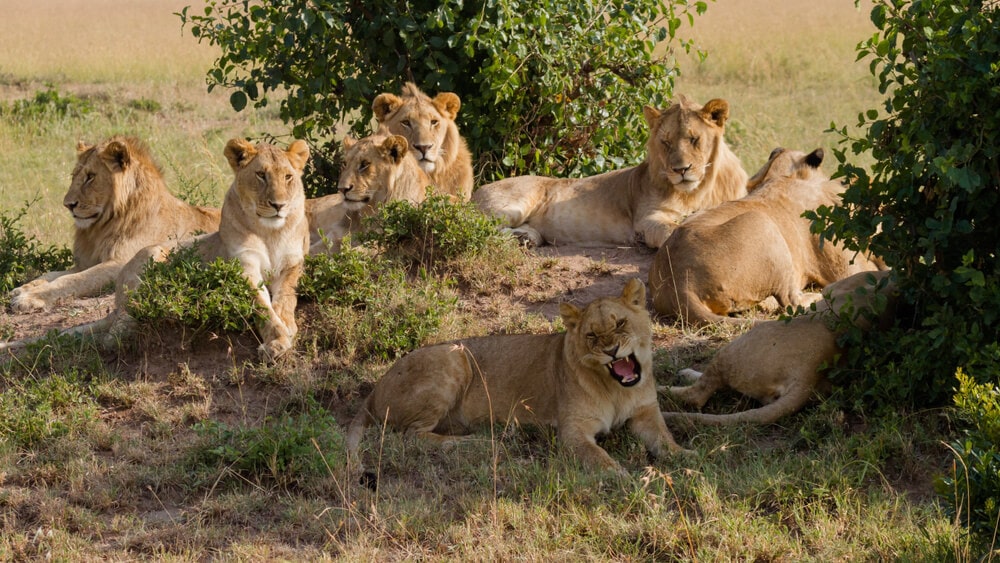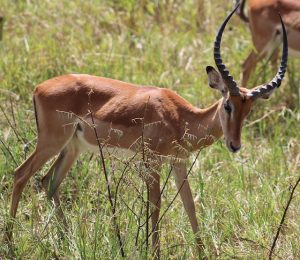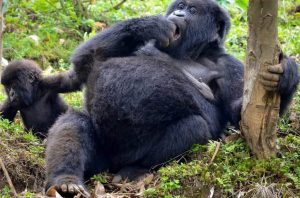Big Five Safari in East Africa
When people dream about East Africa, they frequently envision thrilling encounters with gorgeous animals. The most famous of these are the Big Five: lion, leopard, elephant, buffalo, and rhinoceros. But did you realize that this phrase came from hunting culture? These five were regarded as the most difficult and deadly animals to track on foot. Today, they are the pinnacle of wildlife tourism, an ethical and awe-inspiring celebration of Africa’s biodiversity. Big Five Safari in East Africa
A truly Big Five safari entails more than merely crossing species off a list. It’s about hearing the sheer force of a lion’s scream ringing at dawn, seeing a leopard’s shadow melt into golden grass, or locking eyes with a lumbering elephant as it saunters across your path. Each animal encounter provides a unique glimpse into the wild, some dramatic, some tranquil, all unforgettable.
But where in East Africa can you consistently witness all five? While not every locale promises sightings of all five, there are a few where the odds are as exciting as the scenery.
Kenya’s Masai Mara: The Theatre of Predators and Prey
Few sites reflect Africa’s soul as well as the Masai Mara National Reserve in southwestern Kenya. It is best known for the yearly wildebeest migration, which involves about 1.5 million animals, but there are also year-round populations of lions, elephants, and buffalo. The wide savannahs, filled with flat-topped acacia trees and guarded by Maasai warriors, make for one of the most cinematic wildlife scenes on Earth. Big Five Safari in East Africa
Lions are nearly a given here, and cheetahs, while not among the Big Five, are a pleasant addition. Leopards prefer to lurk in the trees around the Mara River, but elephants travel in vast matriarchal herds, frequently with charming calves in tow. Buffalo are common and intimidating in appearance, grazing calmly until they detect a threat. While black rhinos are there, they are infrequent and best found in the adjacent Mara Triangle or private conservancies like Olare Motorogi and Naboisho, where sightings are more often and crowds are smaller.
The Mara offers a true Big Five safari with strong conservation ethics and community involvement. Guided wildlife drives, hot-air balloon safaris, and walking tours all offer unique opportunities to encounter these local legends.
Tanzania’s Serengeti and Ngorongoro: A Duo of Distinction
Just across the border in northern Tanzania is the Serengeti National Park, Kenya’s wild brother in both spirit and size. It covers more than 14,000 square kilometers and features limitless grasslands rich with species. Big Five Safari in East Africa. This is predator country; leopards slink through riverine woodlands, while lion prides recline in the sun atop granite kopjes. Massive buffalo herds crash over the valleys, while elephants walk across the horizon like ancient nomads.
While rhinos in the Serengeti are still scarce due to previous poaching pressures, a short drive southeast takes you to the Ngorongoro Crater, one of the few places in Africa where you may view all five Big Five species in a single game drive. This ancient volcanic caldera creates a natural enclosure, concentrating wildlife in a confined region. Black rhinos graze the broad plains, and gigantic tuskers coexist with elusive leopards and large cats on the prowl.
Together, the Serengeti and Ngorongoro provide a comprehensive safari experience in which grandeur, diversity, and legacy collide. When you combine Maasai villages and archaeological riches like Olduvai Gorge, you have a place that is as culturally rich as it is biologically diverse.
Uganda’s Murchison and Queen Elizabeth Parks: The Big Five with a Primate Twist
While Uganda is best known for its gorilla and chimp trekking. It also has surprising Big Five potential, particularly when visiting Murchison Falls and Queen Elizabeth National Parks. These two settings provide complementary experiences, with each contributing an important piece to the Big Five puzzle.
Murchison Falls National Park, Uganda’s largest, is a stunning setting where the Nile flows through a small valley before broadening out into a fertile delta. It is home to elephants, buffalo, and a healthy lion population. Leopards are more difficult to observe, frequently lurking in fig trees or during twilight drives. The reintroduction of white rhinos at Ziwa Rhino Sanctuary, just south of the park, rounds out Uganda’s Big Five offerings, while rhino tracking takes place outside of regular game drive settings. Big Five Safari in East Africa.
Queen Elizabeth National Park, located further southwest, is a diverse landscape of savannah, crater lakes, and marshes. The Ishasha Sector is well-known for its tree-climbing lions. One of only a few populations in Africa with this unusual activity. When combined with boat tours on the Kazinga Channel, where elephants and buffalo may cool off by the dozens, you get an intimate and active safari experience.
Add a primate trek to Bwindi Impenetrable Forest or Kibale National Park, and Uganda provides guests with a truly diversified safari in which Big Five sightings combine seamlessly with lush rainforests and endangered apes.
Rwanda’s Akagera National Park: A Rising Big Five Gem
Akagera National Park, in eastern Rwanda, was once deprived of wildlife due to decades of conflict, but it is now a conservation success story. Akagera today supports all five Big Five species, including restored black rhino and lion populations. Thanks to the collaboration between the Rwandan government and African Parks.
The park’s diverse topography, including marshes, rolling hills, wide plains, and lake systems, provides exciting viewing opportunities. You might witness elephants crossing the savannah in the morning, leopards at sunset, and rhinos grazing near lakeshores. Boat safaris on Lake Ihema provide a novel variation, with hippos and crocodiles joining the display.
Akagera is suitable for guests wishing to combine meaningful conservation tourism with outstanding wildlife viewing in a calmer, less-crowded environment. When combined with gorilla trekking in Volcanoes National Park, Rwanda provides an upgraded safari experience rich in biodiversity and optimism.
Choosing the Ideal Safari Destination for You
Each place provides a unique Big Five experience influenced by its nature, conservation journey, and cultural background. If you’re looking for high-volume sightings in renowned environments. Kenya’s Masai Mara or Tanzania’s Ngorongoro Crater might be the best options. Uganda is ideal for Big Five and great ape encounters due to its depth and diversity. And for smart, conservation-focused travel, Rwanda’s Akagera exemplifies the potential of responsible tourism.
At Abunda Discoveries Uganda, we create unique itineraries that prioritize your interests, whether that’s morning lion tracking, rhino conservation walks, or combining game drives with cultural experiences. With skilled guides, small group dynamics, and a sustainability-focused mindset, we encourage you to experience the Big Five in a compelling, personal, and thoroughly African way.




